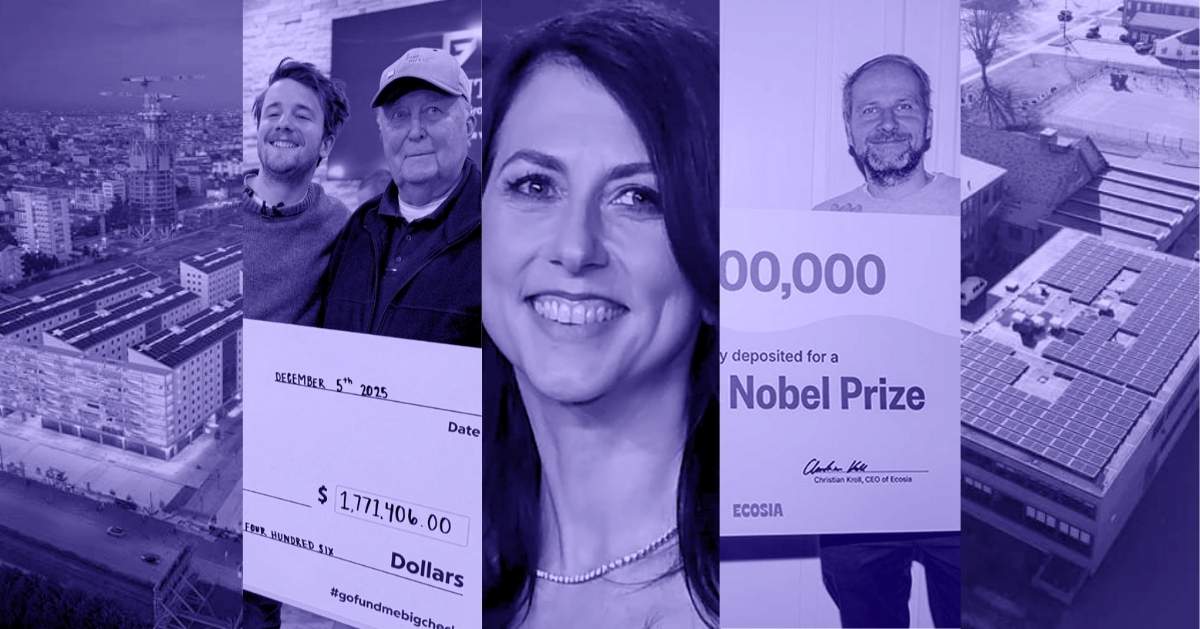The carbon-curbing project goes beyond traditional planting projects by getting sponsors to pay to keep trees alive until they mature
— Plan participants commit to funding three years of tree care
— Kenya's natural forest cover has increased about 1.5% since 2018
— Critics say new trees are no substitute for mature forests
When Ruth Karanja is planting and nurturing trees with her local conservation group in their central Kenyan village, she's thinking about water.
Her hope is that the trees she looks after under a government program allowing organizations to "adopt" forests for conservation will help protect the local water catchment so she and other farmers in Kiabariki can increase their potato yields.
In recent years, crops in the area have been depleted by unusually hot weather and drought that have left the land parched and dried up the Kitiri river, which cuts through Nyandarua County, in the summer months.
"The trees will improve the environmental condition and the agricultural fortunes of the community," Karanja told the Thomson Reuters Foundation as she planted tree saplings with other members of her community forest association (CFA).
By the way, you might also like: Reasons to Adopt a Dog

"The rains will become plentiful and the water volume in the Kitiri river — a lifeline in the village — will increase."
Kenya launched its national tree-planting drive in 2018 with the aim of having 10% of the country covered in natural forest by the end of 2022 – up from 7.4% four years ago - in a bid to cut its greenhouse gas emissions and fight climate change.
That same year, the Adopt-a-Forest program was started to address the lack of after-care, a major flaw in many forest-planting projects in Kenya and beyond, said Eric Tetea Nahama, head of partnerships at the Kenya Forest Service (KFS).
Nonprofit groups and companies often earn green bragging rights by planting trees, then walk away, expecting local communities to spend their own time and money looking after the saplings - which results in many being left to die, Nahama said.
"We needed to move quickly and develop a strategy and guidelines for engaging partners that ensure trees don't die after planting them," he said.
The initiative connects charities, corporations and government organizations — both Kenyan and foreign — with community forest associations, which plant trees on sites chosen and managed by the KFS.

The backers commit to paying for the care of the trees for at least three years, by which point they are considered strong enough to withstand droughts, floods and other climate-linked stresses.
According to Nahama, 80% of the trees planted under the program grow to maturity, compared with less than half of trees under more traditional programs.
"We are now emphasizing growing trees as opposed to (simply) planting them," he said.
Growing Partnerships
Scientists say protecting forests is one of the cheapest and most effective ways to curb climate change because trees suck carbon dioxide, the main gas heating up the planet, from the atmosphere.
As of March, more than 90 organizations had signed up to adopt a section of forest, covering a total area of 44,548 hectares (110,000 acres), Nahama said.
The KFS helps identify which indigenous tree species are best suited to each area - including cedar, cypress and olive - and trains community groups on how to care for them.
The funding pays for the seedlings and their care, including nurseries to raise saplings, electric fences to protect young trees from wildlife and boreholes to provide water, Nahama said.
Community members can make an income by selling seedlings to the organizations involved in the project, he explained.
They can also use the freshly planted areas to farm among the growing trees which shade young crops from intense sunlight and help the soil hold moisture.
But they are not allowed to cultivate maize, to stop the fast-growing crop from competing with the trees for water and nutrients.
Once the trees have matured, CFA members are allowed to cut down a small share for firewood or to sell as timber, as long as they immediately replace any that have been felled.
The collaboration between the government, communities and organizations is vital to keeping trees healthy and discouraging illegal cutting, said Victor Kabutbei, forest station manager for North Kinangop Ward.

Although one forest ranger is supposed to patrol and monitor 400 hectares, in reality each is responsible for an area nearly three times that size, Kabutbei noted.
"KFS cannot be everywhere, every time, so we need other partners," he said.
Job Creation
Among an expanding list of county governments, international nonprofits and private companies, California-based environmental group Eden Reforestation Projects is so far the biggest contributor to the program.
The group has planted more than 13,500 hectares around Kenya at a cost of about $0.15 per tree, said Andrew Kinzer, its international director for Africa.
Making organizations responsible for specific forest areas means progress can be monitored, audited and managed over time, which is not always possible with more traditional planting projects, he added.
Kenya's natural forest cover has increased by about 1.5% since 2018 to 8.8%, according to government figures. There is no data to show how much – if any – of that growth can be attributed to the Adopt-a-Forest program.
But critics say tree planting is a poor replacement for the loss of mature forests, mainly because new trees take decades to absorb the same amount of planet-warming emissions.
Nicholas Oguge, head of the natural capital project at Environmental Incentives, which develops conservation programs for other groups but is not working on Adopt-a-Forest, said Kenya needed greater commitment to provide resources for growing trees long term.
That, he noted, is the only way tree planting will help Kenya curb its greenhouse gas emissions, while also expanding scarce income opportunities for women and young people.
"You are going to create green inclusive jobs... by growing trees under a reforestation program," he said.
This article was originally published by the Thomson Reuters Foundation, the charitable arm of Thomson Reuters, that covers the lives of people around the world who struggle to live freely or fairly.





